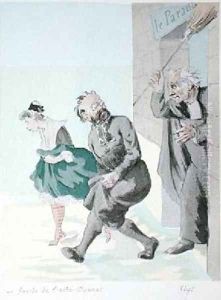H. Lebourgeois Paintings
Henri Lebourgeois, born in 1866 and deceased in 1943, was a French artist known for his contributions to painting and illustration. His work, significant within the context of late 19th and early 20th-century French art, reflects the transitions and stylistic developments of his era, embodying elements of Impressionism and Post-Impressionism. Though perhaps not as widely recognized as some of his contemporaries, Lebourgeois' oeuvre offers a compelling exploration of color, light, and form, characteristics that align him with the broader movements of his time.
Lebourgeois' artistic journey was markedly influenced by the vibrant art scene in France during his lifetime. Amidst a period of rapid social, technological, and cultural changes, he carved his niche, focusing on landscapes, urban scenes, and portraiture. His technique and approach to subject matter showcase a keen observation of the natural and human-made environment, capturing the ephemeral qualities of light and atmosphere with a delicate sensitivity. His landscapes, in particular, are noted for their serene beauty and subtle interplay of colors, often evoking a sense of calm and introspection.
Throughout his career, Henri Lebourgeois participated in various exhibitions, contributing to the dynamic and evolving art world of France. Despite facing the challenges of two World Wars, his work continued to evolve, reflecting the resilience and enduring spirit of the artistic community during tumultuous times. Today, his paintings can be found in several French museums and private collections, where they continue to be appreciated for their aesthetic qualities and historical value. Lebourgeois' legacy, while perhaps understated in the grand narrative of art history, remains an important testament to the rich tapestry of French art in the late 19th and early 20th centuries.


